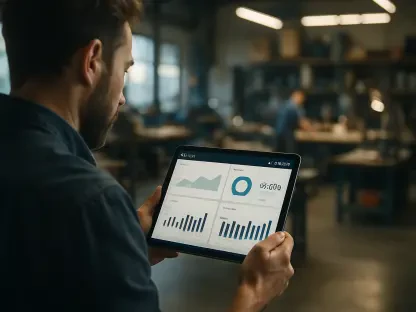North Korea’s move toward embracing electronic foreign currency payments marks a significant shift in its financial landscape, reflecting efforts to modernize and adapt to global economic practices. Late March saw North Korean people’s committees instruct new businesses to implement electronic payment systems capable of handling both domestic and foreign currency transactions. This initiative aims to boost the volume of foreign currency payments through smartphone apps featuring barcodes and QR codes. This technological transition is not merely a superficial update but rather a strategic endeavor to facilitate easier and more accessible financial transactions, thereby enhancing economic fluidity and integration.
Previously, foreign currency transactions were confined to state-designated establishments such as foreign currency stores, department stores, restaurants, hotels, resorts, and tourist destinations. This restriction limited the accessibility and convenience of using foreign currency for everyday transactions. However, this requirement is now extending to market stalls and shops in major cities and provincial capitals. This expansion aligns with the country’s broader efforts to decrease cash transactions and boost electronic payments, following the enactment of the Electronic Payments Act. By encouraging electronic payments, North Korea aims to foster a more connected and efficient financial environment that benefits urban dwellers, business operators, and younger demographics who are typically more inclined toward modern financial services.
Expanding Usage of Electronic Payments
Electronic payments are increasingly being used for various services, including shopping, taxi fares, dining, and paying phone bills. North Koreans can add foreign currency credit to their smartphone apps at designated places such as banks’ foreign exchange centers or mobile phone service centers. This process ensures that conversion rates for these transactions are more aligned with those at state-run market exchanges rather than the potentially less favorable government rates. This alignment is crucial in maintaining the attractiveness and fairness of using foreign currency within the domestic economy.
One key app dominating the electronic transaction space is Jonsong, which supports bank account transfers, barcode, or QR code payments. While other apps like Samhung Electronic Wallet are available, Jonsong remains the most connected to the state-run payment network, reflecting an overarching trend toward a centralized yet modernized financial infrastructure. The central bank’s daily issuance of exchange rates and the transaction fees ranging from 1 to 3% play significant roles in the cost-effectiveness and adoption rates of these apps among the populace. These efforts underscore North Korea’s ambition to create a streamlined and efficient payment system that reduces reliance on cash and enhances the fluidity and convenience of financial transactions.
Market Impact and Future Considerations
The mandate for electronic foreign currency payment systems, especially expanding to market stalls and shops, signals a transformative period for North Korea’s economy. By broadening the scope of electronic payments to more informal and smaller-scale businesses, the country aims to integrate a wider range of economic activities into the formal financial system. This integration seeks to bring about greater transparency and control over financial transactions, facilitating a more robust economic framework. Moreover, it is expected to foster greater trust and adoption of electronic payment systems among the general population, who may initially be hesitant to move away from traditional cash transactions.
Electronic payments are becoming indispensable in various sectors, including transportation, dining, and telecommunications. This widespread application signifies the growing acceptance and reliance on digital financial solutions among North Koreans. The daily issuance of exchange rates by the central bank, coupled with competitive transaction fees, bolsters the appeal and practicality of using foreign currency through electronic means. Furthermore, the convenience provided by smartphone apps in adding foreign currency credit and conducting transactions aligns with global trends in financial technology, suggesting that North Korea is increasingly integrating into the broader technological advancements in finance.
Conclusion
North Korea’s recent move toward electronic foreign currency payments signifies a crucial shift in its financial structure, showcasing efforts to modernize and align with global economic standards. In late March, North Korean authorities instructed new businesses to incorporate electronic payment systems that handle both domestic and foreign currencies. This move aims to increase the volume of foreign currency transactions via smartphone apps equipped with barcodes and QR codes. This technological change is more than a superficial update; it’s a strategic effort to ease financial transactions, enhancing economic fluidity and integration.
Traditionally, foreign currency transactions were restricted to state-sanctioned locations like foreign currency stores, department stores, restaurants, hotels, resorts, and tourist sites, limiting accessibility for everyday use. Now, this requirement is expanding to market stalls and shops in major cities and provincial hubs. This expansion is part of a broader initiative to reduce cash transactions and promote electronic payments, following the Electronic Payments Act’s enactment. By pushing for electronic payments, North Korea seeks to build a more connected and efficient financial system, benefiting urban residents, business owners, and the younger population, who are more inclined toward modern financial services.









